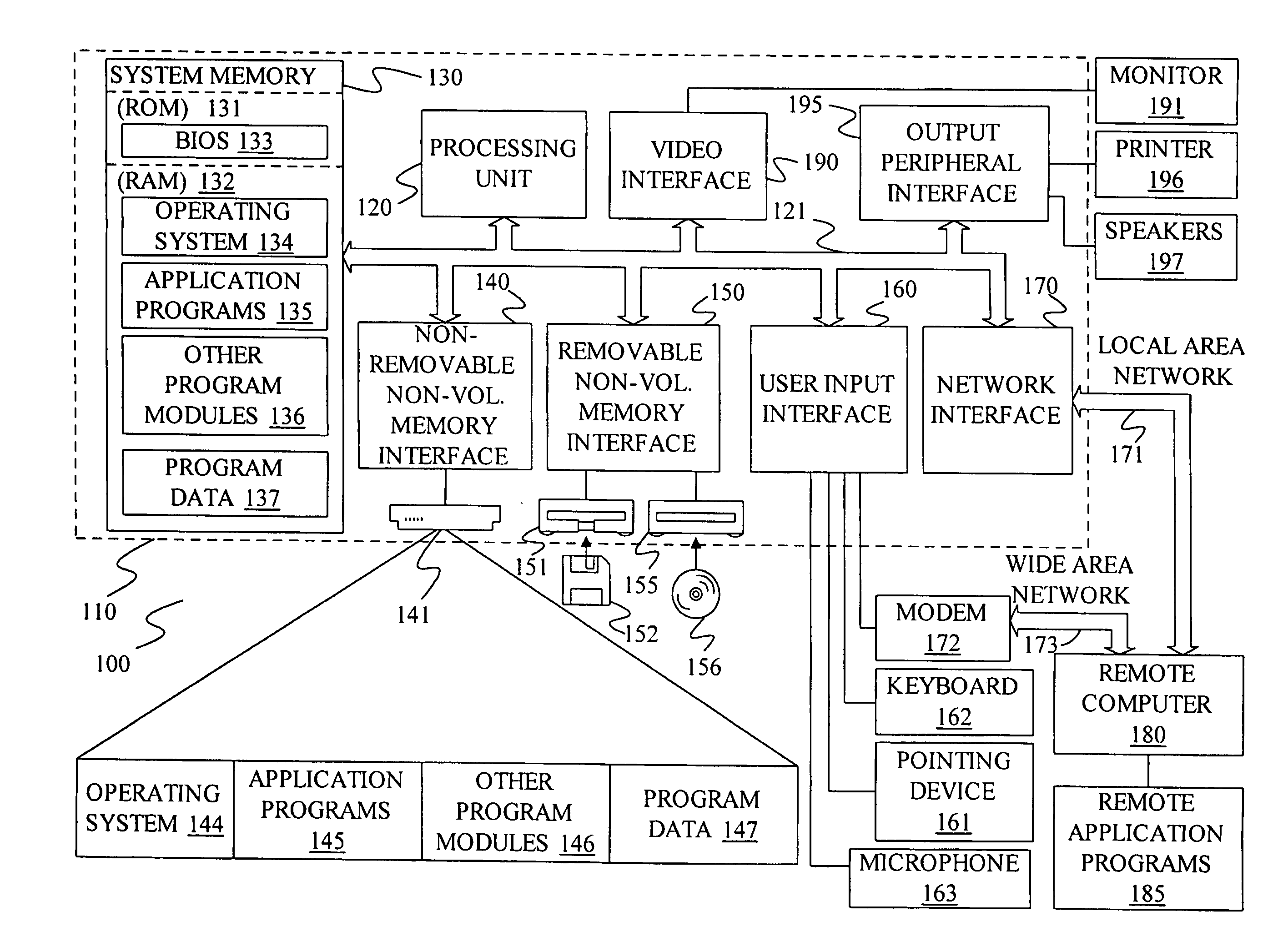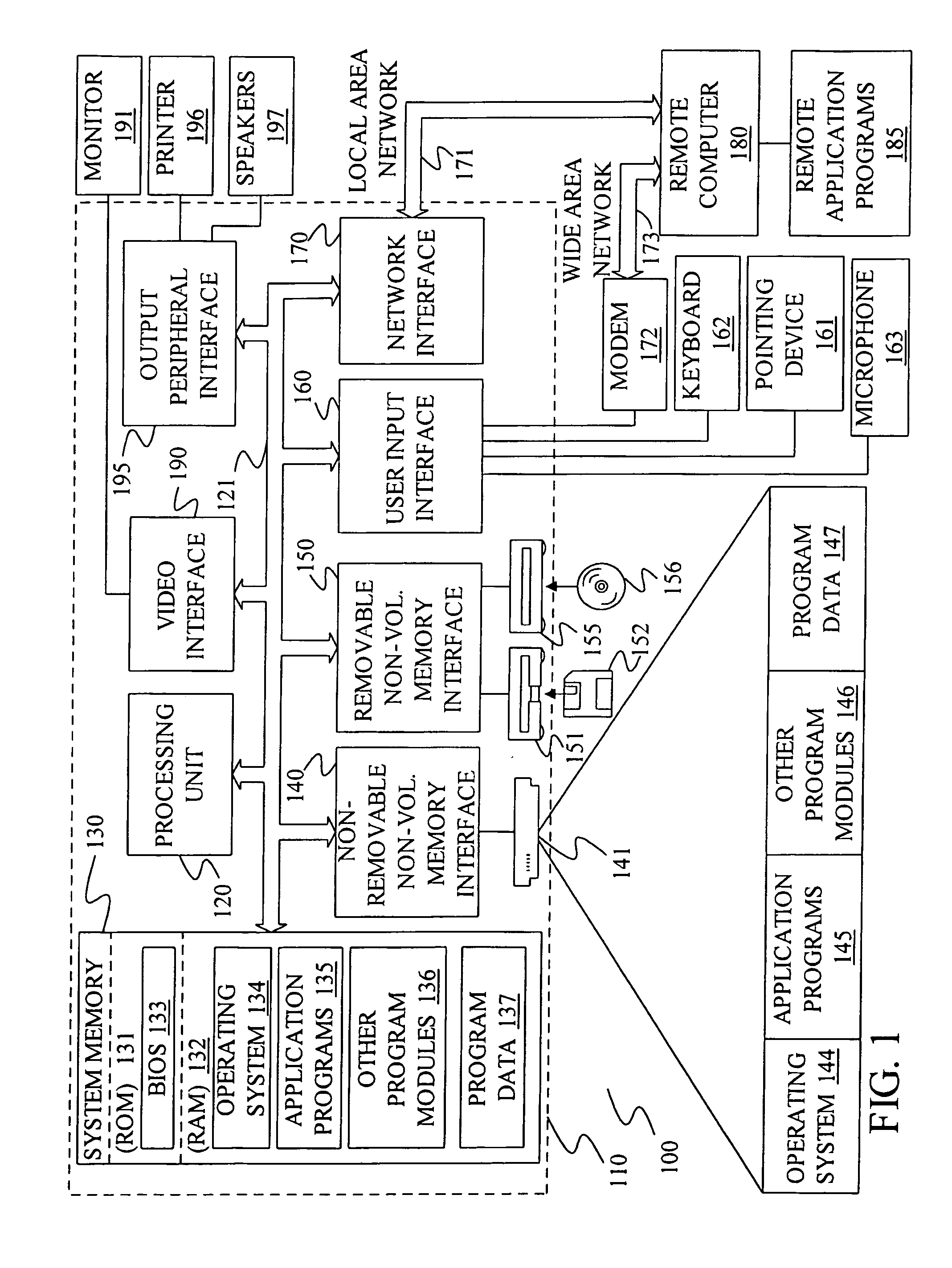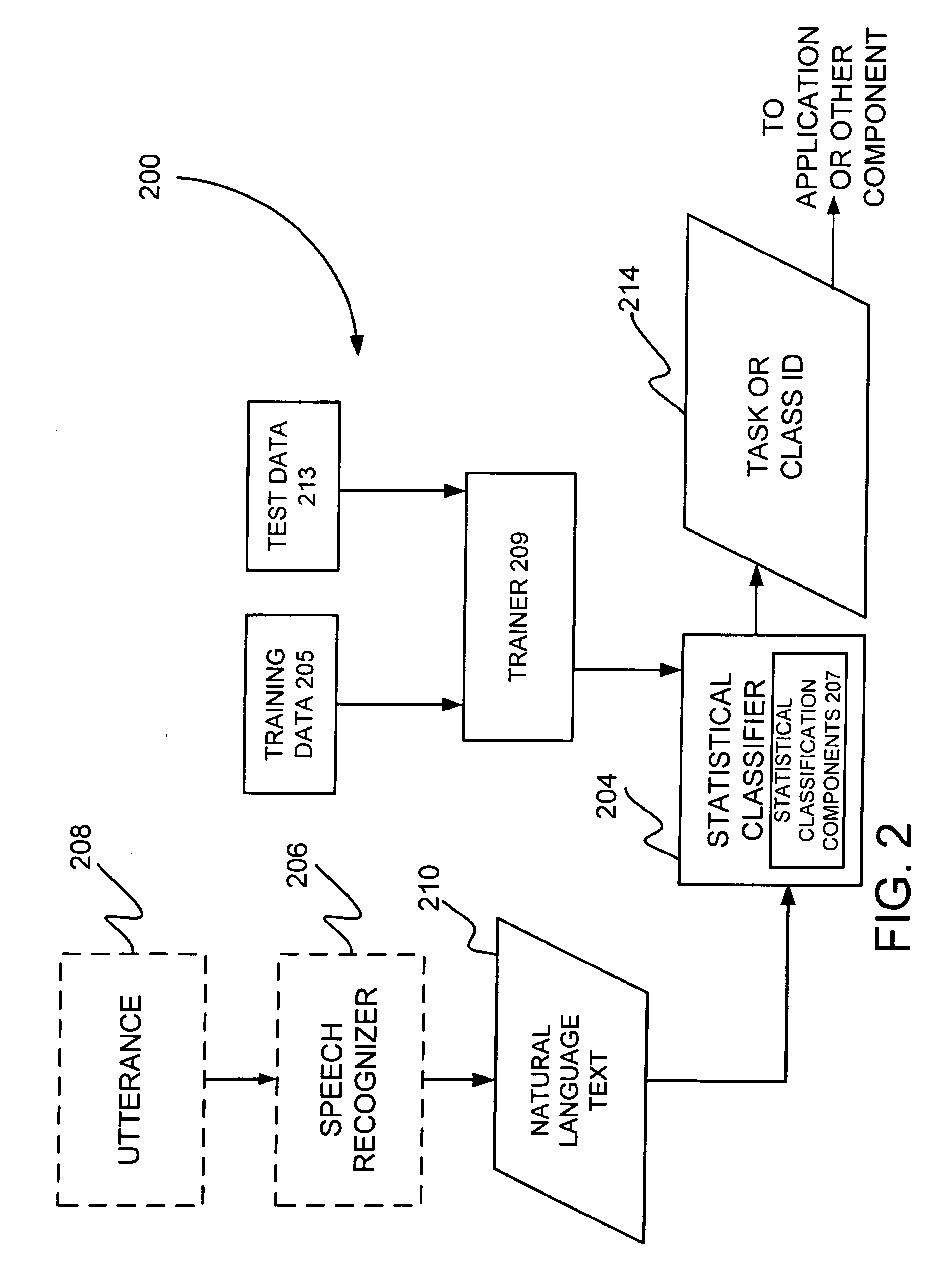Discriminative training of language models for text and speech classification
a language model and discrimination training technology, applied in the field of text and speech classification, can solve the problems of well-defined classification and the production of classifiers with limited classification accuracy
- Summary
- Abstract
- Description
- Claims
- Application Information
AI Technical Summary
Benefits of technology
Problems solved by technology
Method used
Image
Examples
Embodiment Construction
[0014]I. EXEMPLARY OPERATING ENVIRONMENTS
[0015]Various aspects of the present invention pertain to conditional maximum likelihood (CML) estimation of language models used for text or speech utterance classification. However, prior to discussing the invention in more detail, one embodiment of an exemplary environment in which the present invention can be implemented will be discussed.
[0016]FIG. 1 illustrates an example of a suitable computing system environment 100 on which the invention may be implemented. The computing system environment 100 is only one example of a suitable computing environment and is not intended to suggest any limitation as to the scope of use or functionality of the invention. Neither should the computing environment 100 be interpreted as having any dependency or requirement relating to any one or combination of components illustrated in the exemplary operating environment 100.
[0017]The invention is operational with numerous other general purpose or special pu...
PUM
 Login to View More
Login to View More Abstract
Description
Claims
Application Information
 Login to View More
Login to View More - R&D
- Intellectual Property
- Life Sciences
- Materials
- Tech Scout
- Unparalleled Data Quality
- Higher Quality Content
- 60% Fewer Hallucinations
Browse by: Latest US Patents, China's latest patents, Technical Efficacy Thesaurus, Application Domain, Technology Topic, Popular Technical Reports.
© 2025 PatSnap. All rights reserved.Legal|Privacy policy|Modern Slavery Act Transparency Statement|Sitemap|About US| Contact US: help@patsnap.com



